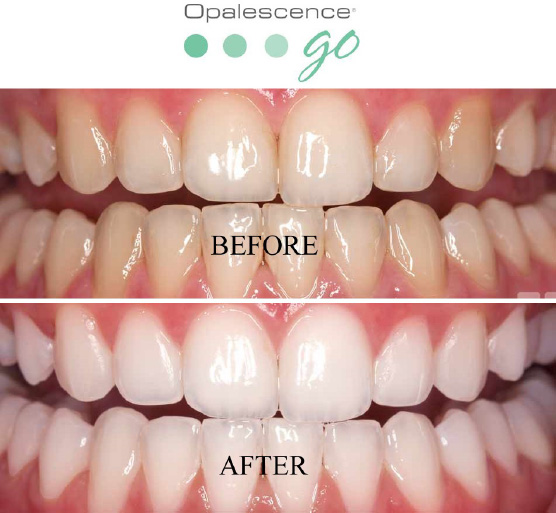Taking care of your teeth is one of the simplest yet most vital steps you can take for your overall health, and mastering the right brushing techniques is key to achieving that. In “Mastering Brushing Techniques for Optimal Oral Health,” you’ll discover how to elevate your dental care routine by using gentle, effective methods that ensure a thorough clean. From the right angle and motion to knowing when to replace your toothbrush, every detail matters in your journey to healthier teeth and gums. With these friendly tips, you can confidently brush your way to a brighter, healthier smile! Have you ever wondered if you’re truly brushing your teeth the right way? It’s easy to overlook the little details in your daily routine, but when it comes to your oral health, mastering proper brushing techniques can make a huge difference. Let’s dive into how you can perfect your brushing routine and keep your smile bright and healthy!
Understanding the Importance of Brushing
Before we delve into the techniques, let’s chat about why brushing is so essential for your oral health. Every time you eat, tiny food particles and bacteria linger in your mouth, which can lead to plaque buildup and eventual cavities if not cleaned properly. Brushing your teeth twice a day helps to remove this buildup, ensuring your teeth and gums stay healthy.
The Role of Plaque
Plaque is a sticky film of bacteria that forms on your teeth and gums. If it’s not removed by proper brushing and flossing, it can harden into tartar, which requires professional cleaning to remove. Regular brushing helps to prevent cavities and gum disease by keeping plaque in check, so it’s worth getting those techniques down!
Choosing the Right Tools
To kick things off, let’s look at the tools you’ll need. Having the right equipment can significantly impact the effectiveness of your brushing.
Toothbrush Selection
Choosing a toothbrush is paramount. Here’s what you should be looking for:
- Bristle Type: Always opt for a soft-bristled toothbrush. Hard bristles can damage your gums and enamel.
- Size: Pick a toothbrush that fits comfortably in your mouth. This will allow you to reach every nook and cranny easily.
- Electric vs. Manual: Both are okay, but studies suggest that electric toothbrushes might provide a superior clean for some people.
Toothpaste Matters
The type of toothpaste you use can also influence your oral health. Look for toothpaste containing fluoride, as it helps to remineralize your enamel and fight cavities. There are also specific kinds for sensitive teeth, whitening options, and even those that target specific issues like tartar control.
The Importance of Flossing
While we’re on the topic of oral hygiene, let’s not forget about flossing! This step is a complementary routine to brushing. Flossing helps to get rid of plaque and food particles wedged between your teeth that your toothbrush can’t reach. Make sure to floss at least once a day for optimal results.

Mastering the Brushing Technique
Now that you have the right tools, it’s time to talk technique. A few small adjustments in your brushing can go a long way in enhancing your oral hygiene.
The 45-Degree Angle
A common mistake is brushing straight on, which can miss cleaning at the gum line. Instead, angle your toothbrush at 45 degrees towards your gums. This will help you effectively sweep plaque away from that crucial area where gum disease often begins.
Gentle, Circular Motions
It’s important that you don’t brush too hard! Instead of using back-and-forth scrubbing motions or pressing down hard, practice gentle circular motions. This technique is less abrasive on your gums and enamel while still ensuring a thorough clean.
Brushing All Surfaces
It’s not enough to just brush the outer surfaces of your teeth; you need to pay attention to every surface for a complete clean. Here’s a brief overview:
- Outer Surfaces: Brush the outside of your teeth, making sure to reach the gum line.
- Inner Surfaces: Flip your toothbrush and brush the inside surfaces with the same gentle, circular motions.
- Chewing Surfaces: Don’t forget the tops of your molars! Use a flat side of your toothbrush for a more effective clean.
Duration of Brushing
You should aim to brush for at least two minutes. It can be easy to rush through this process, but investing an extra minute can significantly increase your cleaning effectiveness. You might consider using a timer or a song to help you keep track!
Avoiding Common Brushing Mistakes
We all make mistakes sometimes, and brushing our teeth is no exception! Here are some common pitfalls and how you can avoid them:
Brushing Too Hard
Overzealous brushing can damage your gums and wear away enamel. Remember, a gentle touch works better than brute force. You might even find that your toothbrush gives you feedback; if you notice frayed bristles quickly, you’re probably brushing too hard!
Neglecting Your Tongue
Did you know that your tongue can harbor bacteria? Make it a habit to brush your tongue gently each time you brush your teeth. This not only helps to combat bad breath but also contributes to your overall oral health.
Forgetting to Replace Your Toothbrush
It’s easy to overlook, but you should replace your toothbrush every three to four months or sooner if the bristles become worn out. A frayed toothbrush won’t clean your teeth effectively and can be less gentle on your gums.
Skipping Regular Dental Visits
Even with the best brushing techniques, regular dental check-ups are essential for maintaining oral health. Be sure to visit your dentist every six months (or as often as they recommend) for preventive care and professional cleanings.

Effective Brushing Tips
Having learned about the techniques and pitfalls, you might be wondering what final tips can help you ensure you’re getting the most out of your brushing routine.
Create a Routine
Consistency is key! Set a schedule to brush morning and night, and stick to it. You might even consider tying this routine to existing habits—like brushing after your morning coffee or before bed.
Use a Timer or App
Using a timer can be a game-changer, especially if you tend to rush. There are several apps available that can guide you through the two-minute brushing time or even play music to keep you engaged.
Keep Your Toothbrush Clean
Make sure to rinse your toothbrush with water after use to keep it clean. Additionally, store it upright and allow it to air-dry. Avoid covering it to help prevent bacterial growth.
Involve Your Family
If you have kids, make brushing a fun activity! Teach them the importance of oral hygiene early on and practice brushing together. You can even turn it into a game to help keep them engaged.
Specialized Brushing Techniques
As you delve deeper into brushing techniques, you may come across specialized methods that can cater to your unique dental needs.
Brushing with Braces
If you’re wearing braces, your oral hygiene routine requires a few modifications:
- Use an orthodontic toothbrush that features a V-shaped bristle pattern.
- Brush after every meal to prevent food from getting stuck.
- Consider an interproximal brush to clean around brackets and wires.
Sensitive Teeth Solutions
If you have sensitive teeth, consider using a toothpaste for sensitivity and being especially gentle when brushing. Your dentist may recommend a specific technique tailored to your needs.
Aging and Oral Health
As we age, we may experience changes in our oral health. Be mindful of using a toothbrush with an ergonomic handle for ease, and discuss any concerns with your dentist to adapt your brushing routine accordingly.

Maintaining Overall Oral Health
Brushing is just one component of maintaining good oral health; let’s not forget other lifestyle choices that play a role as well.
Nutrition Matters
What you eat impacts your oral health. A balanced diet with minimal sugary snacks goes a long way in preventing cavities. Incorporate plenty of fruits, vegetables, and whole grains, which provide essential nutrients for healthy teeth and gums.
Hydration is Key
Stay hydrated! Drinking water helps rinse away food particles and bacteria, and it also combats dry mouth—an issue that can lead to cavities.
Avoid Tobacco Products
If you smoke or use tobacco, consider quitting. Tobacco contributes to gum disease and can stain your teeth. Your overall health will also thank you!
Limit Sugary and Acidic Foods
If you enjoy sweets or acidic foods, be mindful of how they affect your teeth. Try to consume them in moderation, and follow up with a glass of water to wash away acids.
The Impact of Technology on Brushing
With advancements in dental technology, it’s worthwhile to explore how modern solutions can improve your oral health routine.
Smart Toothbrushes
Smart toothbrushes can track your brushing habits and provide feedback on technique. They can help you ensure that you’re brushing for the right amount of time and at the correct pressure.
Mobile Apps
Many mobile applications are designed to help you maintain a healthy brushing routine. They can send reminders and keep track of your progress, and some even feature educational content about oral health.

Tracking Progress and Making Adjustments
Once you’ve implemented these techniques, consider keeping track of your brushing habits. Reflect on your routine every few months to find areas for improvement.
Journaling Your Routine
It might be beneficial to keep a simple journal of your oral hygiene routine. Note how often you brush and floss, any changes to your diet, and the overall health of your mouth. Doing this can help you see trends and areas that need more attention.
Concluding Thoughts
Ultimately, mastering brushing techniques is a crucial aspect of achieving optimal oral health. By equipping yourself with the right tools, perfecting your approach, and creating a consistent routine, you’ll set yourself up for a lifetime of healthy smiles. Remember, the journey towards better oral health is ongoing, and every small effort counts. So, what changes will you make to your brushing routine today?



